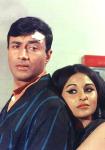Every time an Indian cricket team gets ready for yet another series, it is not just cricket fans getting ready for the action. Ad planners in hundreds of agencies train their attention on the Indian performance too.
While most of them are indeed cricket fans -- what else can an Indian be -- they are also keenly following the action to see how much ad spend they ought to place on cricket-related activities during such series.
The cricket performance is no different from the Sensex. And there are so many variables. Depending on the products and their strategy, some have aligned themselves to team concepts and some to individual brilliance. Many simply ride the bandwagon of success and hope for a rub-off.
The four-Test series ended in an exciting draw -- many interpret it as a moral victory for the Indians, who when they arrived Down Under, were underdogs, fighting to shrug off the image of being tigers at home and paper tigers abroad.
The analysis of the series by AdEx shows interesting trends. The series was telecast live by Star Sports, but virtually every channel had cricket specials, sponsored by some company or the other.
The mad ad rush also meant channels were willing to spend heavily on sending their own crews for features and side stories to beef up and spice up the coverage, besides hiring a slew of experts.
When one considers the kind of costs involved in uplinking and sending the footage by satellite, the ad revenue was obviously substantial enough to more than make up for it.
The success of the team in Australia has set the trend for the next series between India and Pakistan in Pakistan, in March.
That is not just competitive but also historic considering India has not played Tests in Pakistan for over a decade. The main beneficiary this time is going to be Dubai-based TEN Sports, which has the telecast rights.
An overall analysis of the India-Australia Test series shows that it was not just the Indian team that came out with flying colours, but also the channels.
The advertisers for their part feel they got their money's worth in terms of brand-building and image perception.
Fans and advertisers alike approached the first Test at Brisbane with trepidation as pundits predicted a one-sided series.
The advertising in terms of duration in seconds was just 20 per cent, which is not bad, but nothing compared to a series at home and when an Indian success is virtually guaranteed, given India's ability to put it across the toughest of teams at home.
But the inspired draw in Brisbane, aided by some excellent performances by the likes of Sourav Ganguly and V V S Laxman, brought advertisers swarming in for the second Test at Adelaide.
Advertising peaked during the second Test match played at Adelaide and it saw the commercial time bought rise from 19.9 per cent to 28.3 per cent.
The match was won by India and then the next Test saw a drop to 23.95 per cent, and the Test was won by Australia. The decider once again saw a rise in interest levels and buying rose to 27.8 per cent of ad duration in seconds.
The AdEx analysis shows another interesting aspect. Cellular phone services, paints and soft drinks, two-wheelers and courier sevices accounted for nearly half the advertising.
Cellular services with around 14 per cent and paints and soft drinks accounted for 8 per cent each. Two wheelers were over 7 per cent and courier services around 6 per cent.
The top brands were Hutch with almost eight per cent by itself and the next was Coca Cola with 7 per cent. Hutch used a variety of ads, including that of Dravid. The next leading brand was DHL Couriers, which has no cricketers in its stable.
TVS Victor with Sachin Tendulkar came in fourth and Mayur Suitings ads, which featured Virender Sehwag was fifth. Other leading brands were Airtel, Asian Paints and Samsung.
Any perception that the advertising may have become cluttered was dispelled as another interesting point emerged. Advertising in most categories was dominated by one or two advertisers.
The cellular phone services had two -- Hutch and Airtel -- while the paints category had Asian Paints, Nerolac and Berger. In almost all others it was just one dominant brand.




